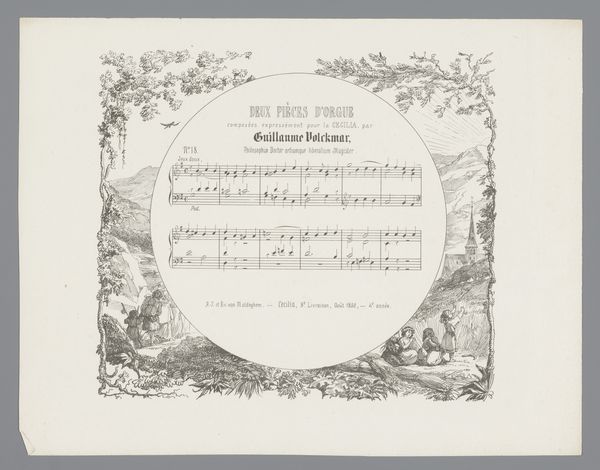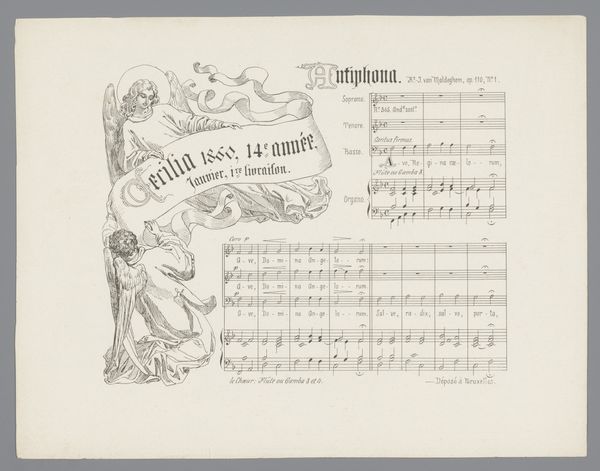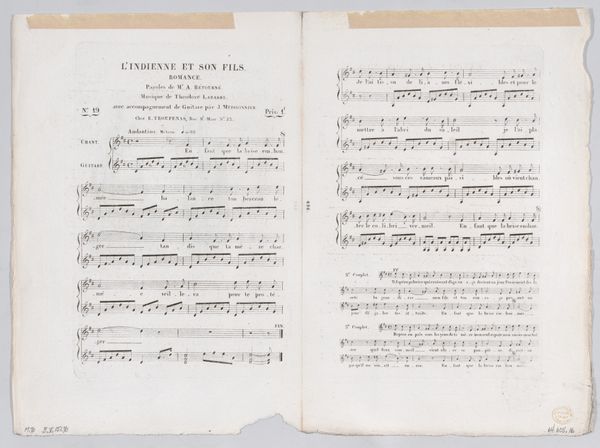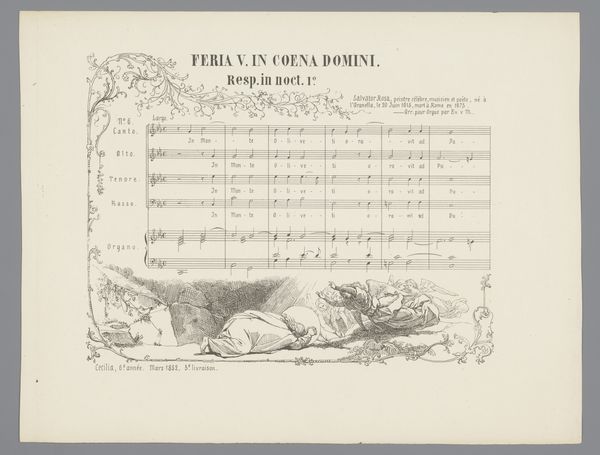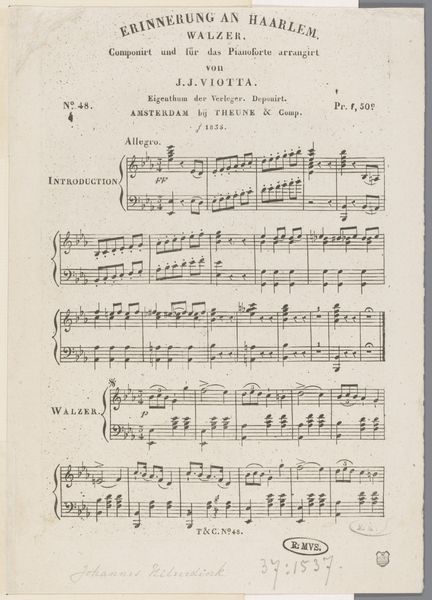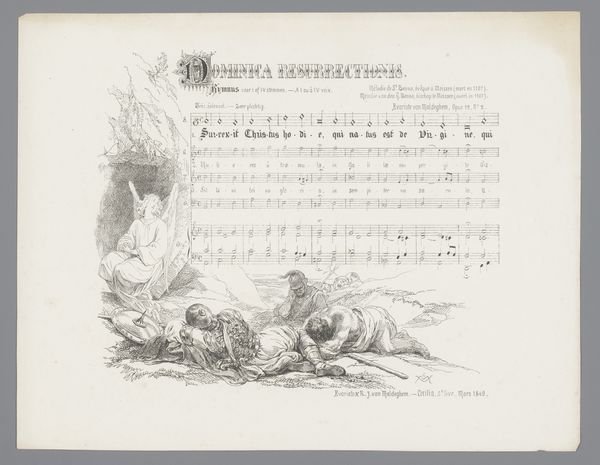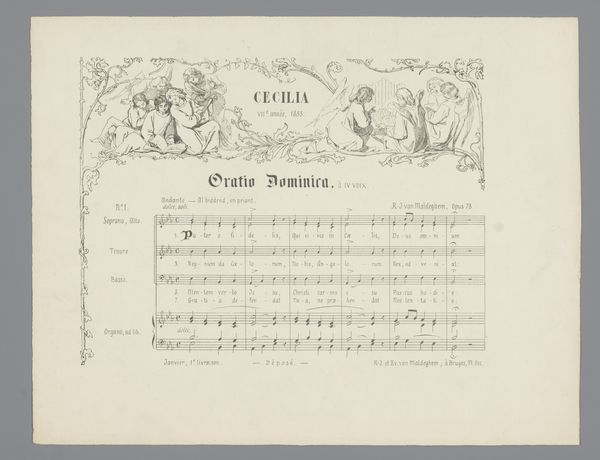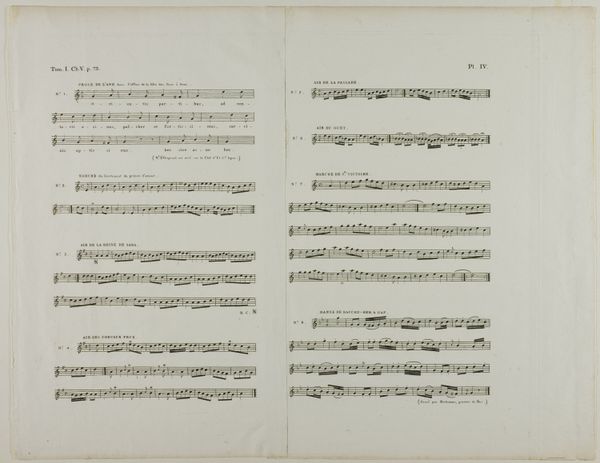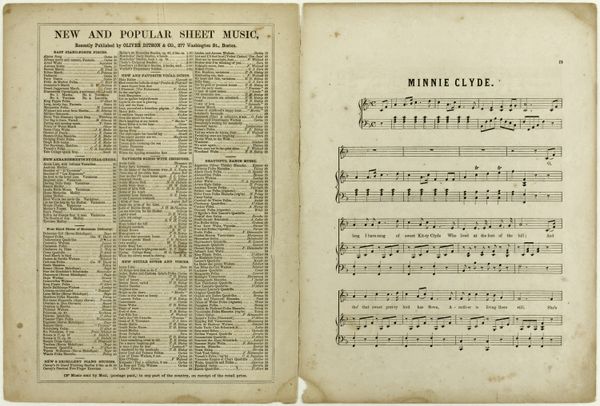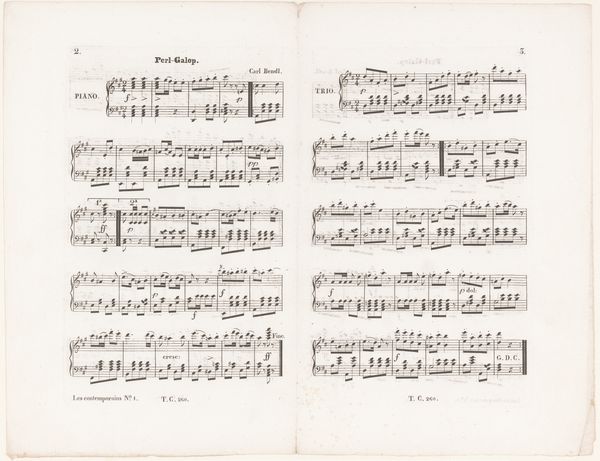
Dimensions: height 266 mm, width 351 mm
Copyright: Rijks Museum: Open Domain
Editor: So, here we have “Drie putti en een engel met banderol,” from 1864 by Eugène Van Maldeghem. It’s an engraving on paper. It’s quite detailed and features music and these charming Baroque-style angels... What historical context shaped a piece like this? Curator: It’s fascinating how printed music like this was used in a liturgical setting in 1864, and that is not just functional; the engraving is ornate, deliberately echoing the artistic conventions of the Baroque era while incorporating contemporary elements of print culture. What does this suggest about the intended audience and the societal function of this particular sheet of music? Editor: It feels like a way to elevate the status of something functional into something worthy of appreciation on its own. Was there an interest in that period of returning to past forms, in other words? Curator: Exactly! Consider how religious institutions used artwork, and visual culture, to solidify authority. The careful, almost nostalgic recreation of the Baroque motifs lends the music legitimacy and tradition, attempting to visually convey the timeless nature of the church’s teachings and how printed media and the proliferation of sheet music allowed these visuals and messages to reach wider audiences. It's an intentional deployment of aesthetics in support of institutional messaging. Editor: I didn’t consider it that way, it does really shift the way you can look at just some regular old sheet music! I guess that even something utilitarian can convey complex messages about culture and power. Curator: Indeed. Paying attention to how and why visual languages are deployed allows a richer understanding of even the most mundane objects.
Comments
No comments
Be the first to comment and join the conversation on the ultimate creative platform.
